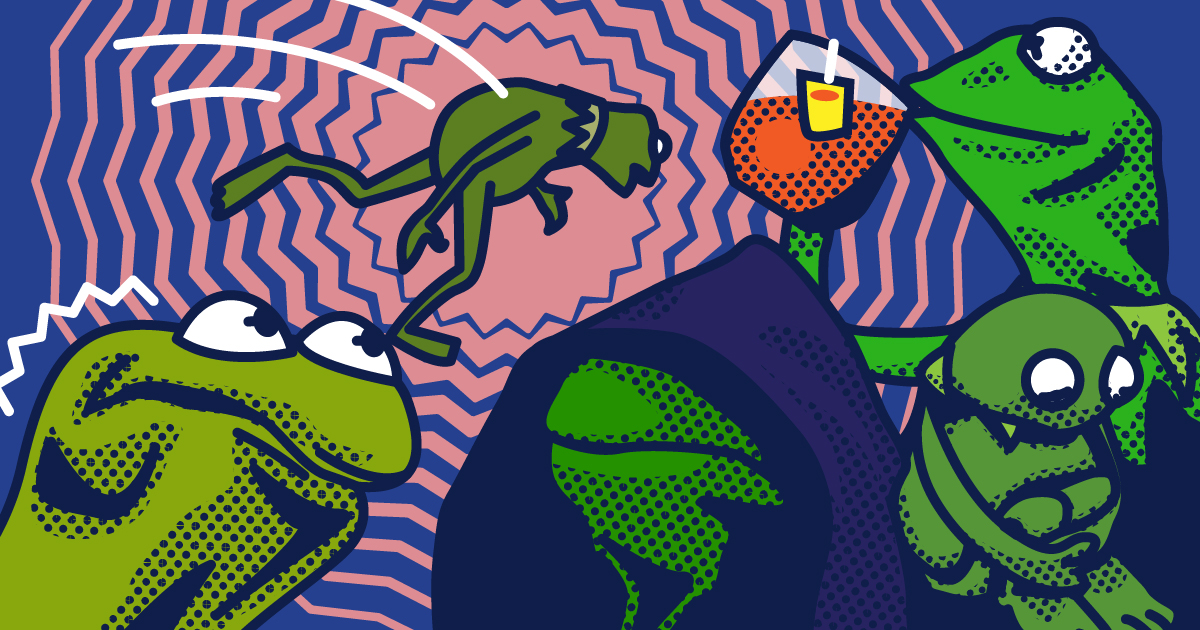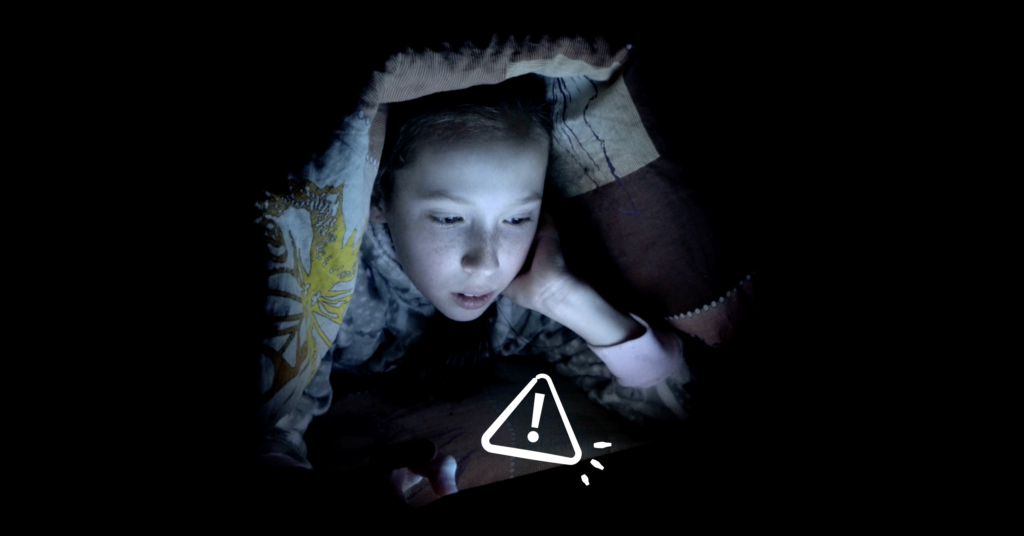
Note: This article contains images readers may find disturbing. If you (or someone you know) are struggling with suicidal ideation, please reach out to someone you trust for help or contact the Suicide Prevention Lifeline.
Kermit the Frog isn’t new to meme culture. You’re probably familiar with “Evil Kermit” (which features two Kermits in a good angel/bad angel setup) and “But That’s None of My Business” Kermit (which has him sipping tea and being sarcastic). But this innocent green muppet is currently making the rounds online in a series of disturbing suicide memes and jokes.
There are more than 55,000 posts on Instagram with the hashtag #kermitsuicide, and when you search for it on Twitter, a warning box appears encouraging users to contact the National Suicide Prevention Lifeline if they’re feeling suicidal. In this post, we’re going to explain what you need to know about this trend, and what it means if your kids are using Kermit to joke about suicide.
The Origin of the Kermit Suicide Phenomenon
“Kermit Suicide” first appeared in a virtual video chat room in October 2018. A person playing as Kermit is chased onto a roof and then jumps off the roof screaming, “I am going to Kermit suicide.” The joke was completely unscripted, but it resonated with the online community and quickly began to spread. Part of the meme’s popularity stems from the obvious pun created by the similarity between “Kermitting” and “committing” suicide. Kermit is also the ringleader of a beloved TV show for children, and the fact that he would do something so dark makes the meme even more surprising.
We’ve discussed in a previous blog post how kids jokingly say “kms (kill myself),” as in “I’m gonna be late for school again, kms.” As Kermit Suicide has gone viral, so too has the prevalence of kids riffing on it with turns of phrase like, “ima kermit suicide” or “go kermit suicide.”
Kids have also begun crafting new memes in which Kermit is “committing suicide” in different and macabre ways. Content on Instagram, YouTube, and even TikTok shows homemade videos of stuffed Kermits hanging themselves, being thrown off roofs, overdosing on pills, and more.
Why Memes Go Dark
Despite the fun and humor that memes can bring, they’re often used as a means of deflection or a way of coping with stressful situations — laughing or getting others to laugh derails tension. For kids who may have a hard time communicating difficult emotions, memes provide a new medium of expression. They can even become a shorthand language among some children.
Dark memes are examples of a kind of gallows humor, and these types of jokes are common with kids on the internet today. But it’s also possible that there may be truth to the feelings behind the posts. When it comes to kids and a subject like suicide, however, you can never be too safe.
Suicide Isn’t Funny
Suicide isn’t something to joke about. It’s currently the second-leading cause of death for kids aged 12 to 19 — more than deaths by cancer, AIDS, stroke, and birth defects combined. Nationwide, one in 10 high school girls will attempt suicide. Though it’s unclear exactly why the suicide rate has risen so dramatically in the past 20 years, there’s no denying that kids today struggle with cyberbullying, stress, anxiety, and depression in unprecedented levels.
Does this mean that every kid that shares or makes suicide memes is suicidal? Of course not. But as we mentioned above, this generation seems to be normalizing suicide in a way that previous generations didn’t. Younger children may be unable to tell the difference between what’s ironic and what’s not.
What Parents Need To Know About Dark Memes
In a recent post in the Atlantic, experts said that although some of these dark meme posts may be concerning, there are some situations in which they can actually be therapeutic. This doesn’t mean that they’re not concerning, however.
We spoke with Dr. David D. Luxton, a licensed psychologist and professor at the University of Washington School of Medicine, about these types of memes and what they portend for kids. “Given the variation in how young people communicate with social media, parents, peers, and others need to know what to look out for regarding self-harm and suicide risk,” Luxton said. “Education and awareness of warning signs across communities, ways to help persons struggling or in crisis, and technology that can help identify risks, are most promising."
Parents should talk to kids about suicide memes. Encourage them to show you the ones they think are particularly funny. And if they’re darker in nature than you’re expecting, discussing them together can help prompt important conversations about self-harm or suicide, even if there’s no immediate risk.
At Bark, we’ve put together resources to help families and educators address and discuss suicide. You can click below to download:
For parents
Learn the warning signs, risk factors, and how to have a conversation about suicide with your child.
Parent GuideFor educators
Share this helpful guide with educators and school administration to learn risk factors and warning signs.
Educator GuideFor kids
Empower your child to provide support and learn to tell adults when a friend may be talking about suicide.
Guide for KidsRead more
Bark helps families manage and protect their children’s digital lives.






